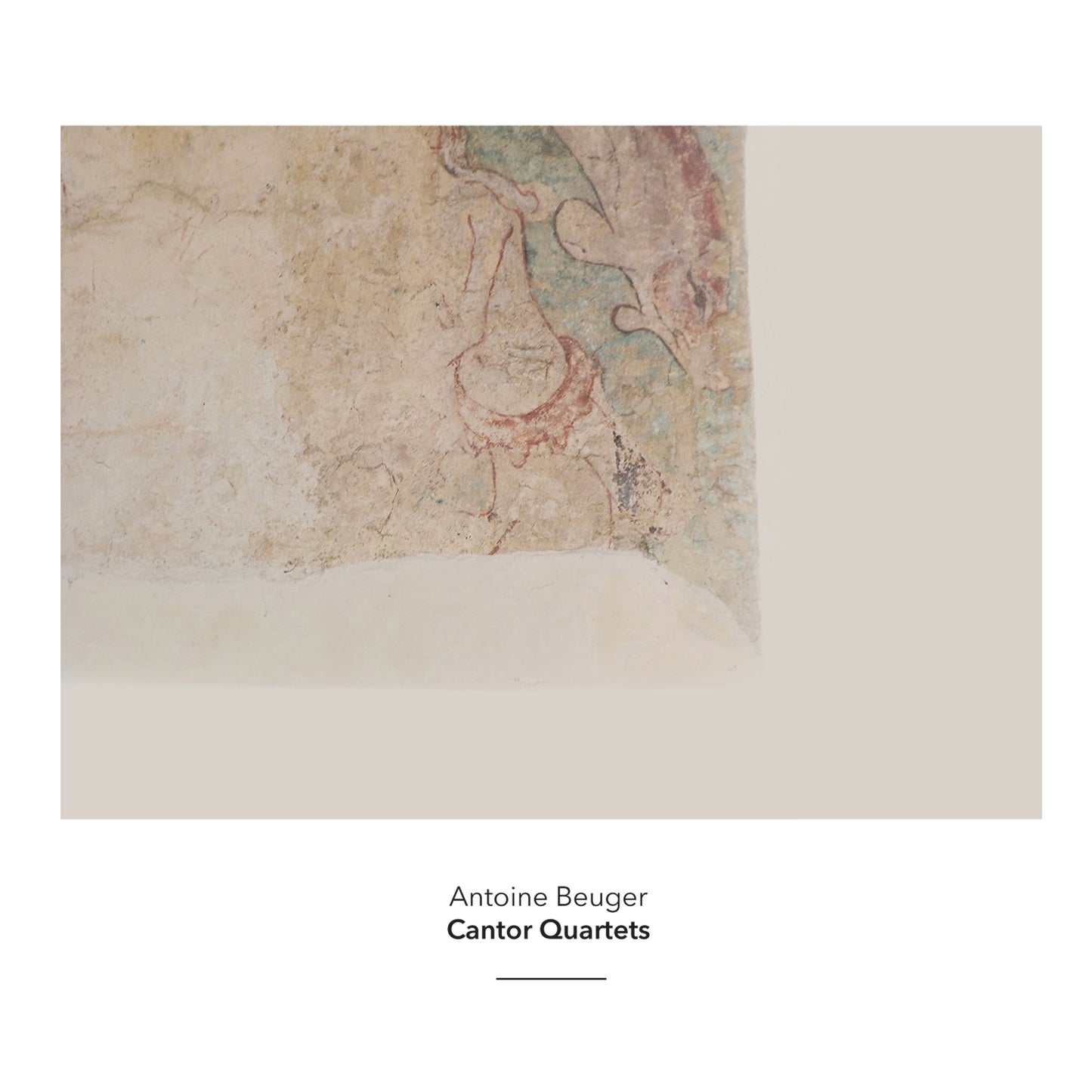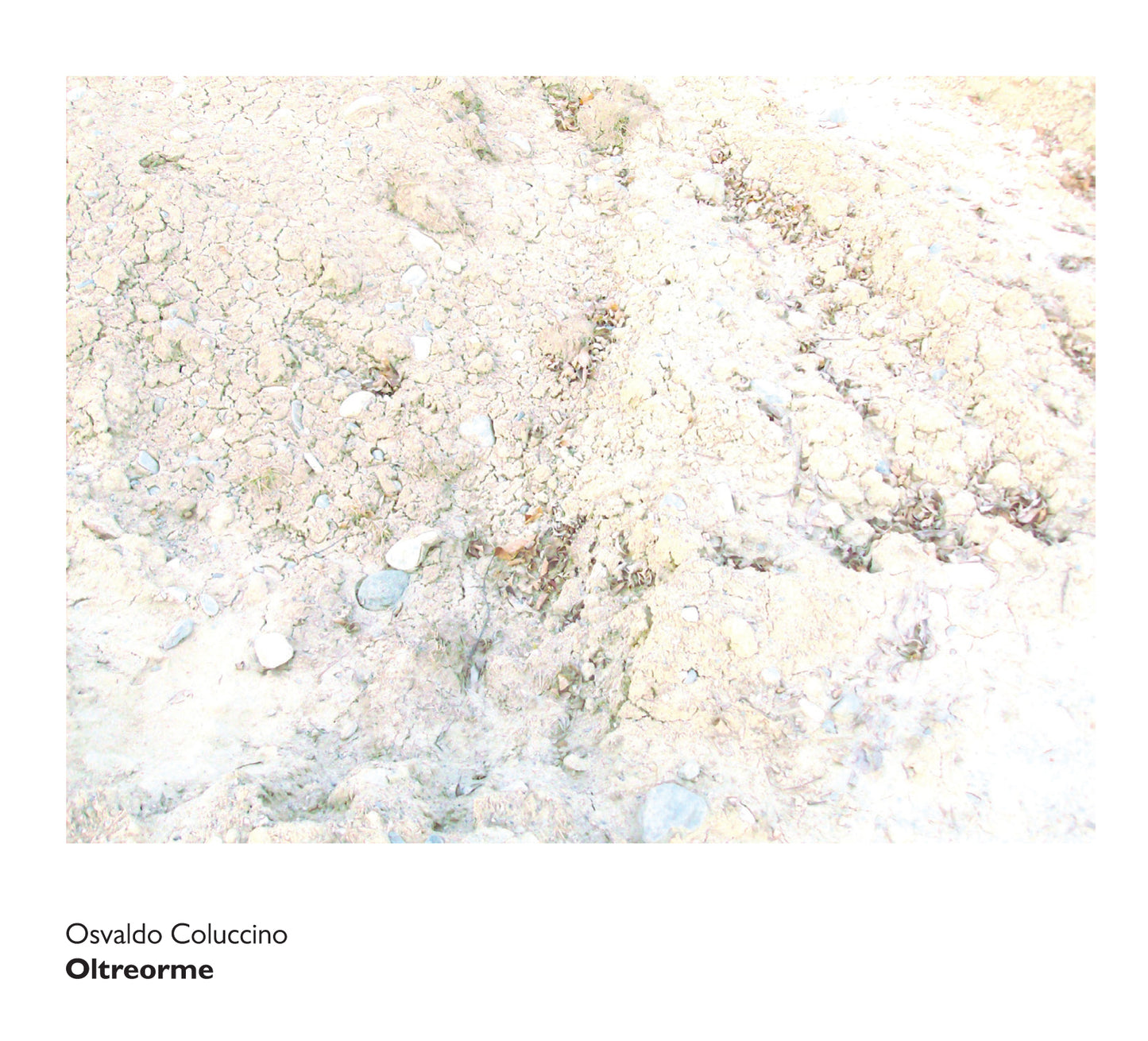at62 x 2
Antoine Beuger
Cantor Quartets
Antoine Beuger
Featuring: Antoine Beuger Jurg Frey Radu Malfatti
Jürg Frey - clarinet
Sarah Hughes - e-bow zither
Dominic Lash - double bass
Radu Malfatti - trombone
2 CDs, #1 77:56 #2 72:41
Recorded in Oxfordshire, June 2012
Antoine Beuger composed his ‘Cantor Quartets’ in 2003. There are 15 pages in the score, four of which are presented on this double CD. Each page contains four lines with seven notes each, all of which should be played gently and for a long or very long duration. Instrumentation is unspecified, and the notes can be played in any octave.
Formally each page is constructed like a round such as ‘Row, row, row your boat’, in that Player A plays the first line as a solo, then when he/she moves on to the second line, Player B starts the first line. Player C starts when Player B begins the second line and Player A starts the third, and so on. The page finishes when Player A finishes the fourth line.
So each page slowly becomes denser as it progresses, starting as a solo, becoming a duet, then a trio, and ending as a quartet.
During the recording occasionally aeroplanes passed overheard. The sounds of the planes were accepted as part of the music rather than being filtered out.

Reviews
"Listeners of free improvisation are well accustomed to the exploration of silence and subtly resonant gesture in the music, and to some of the compositional lineages which has shaped music once called “reductionist.” Considerable attention has been given, these last few years, to the Wandelweiser collective, whose leading representatives include flautist Antoine Beuger, clarinetist Jürg Frey, and guitarist Michael Pisaro. In their compositions, these musicians have not only been unafraid to explore near total silence and the limits (audible and technical) of their instruments, they have also unreservedly embraced tonality in places and blended idioms (as with the regular use of vocals).
If there is a sometimes glassy quality to Beuger’s music on the Dedalus disc on Potlatch, Beuger’s Cantor Quartets come across – despite a shared methodology of layering and lamination and extended silence – as more woolen. Beuger’s compositional instincts for timbre, resonation, and setting are audible on this two-disc set, documenting four pages of his lengthy 2003 composition. Recorded in an Oxfordshire church in Summer 2012, it features Frey (clarinet), Sarah Hughes (e-bow zither), Dominic Lash (bass), and Radu Malfatti (trombone). Unlike spare settings where each musician has a limited number of allotted notes per time period, or something, this one is about wellings up, dynamic arcs, and decay. It is very faint music, living in quiet oscillations, minor details that accrue significance as they make themselves known in their very suggestiveness and tendency to fade (a hint of tinnitus, a slowly lingering layer of which instruments one cannot tell, an audible fragment from a sonic painting of some sort). It takes its time in the first “page,” until at length there is an expansion, a deepening, as the music seems to find its own areas of tension, the layering now revealing semi-tones and half-tones between instruments (Malfatti’s low end is especially effective with Lash), and there is some tonal movement too. The second “page” resides in a space of more steady incandescence, with Hughes and Frey crucial in generating so many overtones. During the latter half of its forty minutes there are moments of real pause and suspension through intervals and differing oscillations, absolutely riveting stuff in the smallest of registers. The third “page” opens with a somewhat ragged low drone, mostly Lash for the opening sequences that concentrate in the lower and middle registers. There are long, but not achingly so, silences, an upwelling symphony of foghorns, and it’s particularly impressive how Beuger engages deliberately wrought timbral difference despite the continued presence of juxtaposition and overlap of instruments. There is also an unexpected and absolutely stunning sequence: a plane engine Doppler-ing away as high instruments join, forming a full tone field, as the piece entire just simply lifts in a single resonant chord. The final “page” retreats into almost total hush, with tiny particles in the upper register producing sine tone effects, super sinuous and restrained even compared to what’s come before. Following another unexpected event, the glorious foghorn chorus midway through, there is a long wind-down to an ominous thrum with deep resonance and spectral overtones. What bewitching music, almost like listening in to interstellar dust forming a proto-planet.”
Jason Bivins, Point of Departure
“Admirers of Beuger have had little to complain about recently, this fine release coming on the heels of the Pisaro/Beuger collaboration on Erstwhile and just preceding a new one on l'Innomable. An excess of evanescent riches.
Four pages out of 15 are presented on two discs here, the performances taking between 34 and 40 minutes each, presented by the rather stellar quartet of Jürg Frey (clarinet), Sarah Hughes (e-bow zither), Dominic Lash (double bass) and Radu Malfatti (trombone). Even without the explanation, the music is extremely transparent, the long, soft notes, in unison or adjacent octaves, accreting gradually, with vast silences between, the sounds emerging and disappearing like 15 minutes of morning light patterns on a wall. (looking at the Dan Flavin installation at Dia Beacon last week, I was strangely reminded of Beuger's music, though mentally substituting--if this is conceivable--a range of whites instead of Flavin's candy tones) Even more so than with much of Beuger's music, or related work, the listener is virtually forced to consider surrounding environmental sounds; more often than not, I find them to be central, tinged by Beuger's. This morning, someone in an apartment on our street was playing what sounded like a Middle Eastern flute, perhaps a ney; it meshed beautifully, as do cars and street sweepers. I was often unaware when a disc had ended.
I can imagine that performing the work is an exacting affair. So odd, and wonderful, that listening to it is the opposite.” Brian Olewnick, Just Outside



